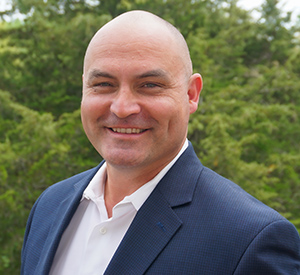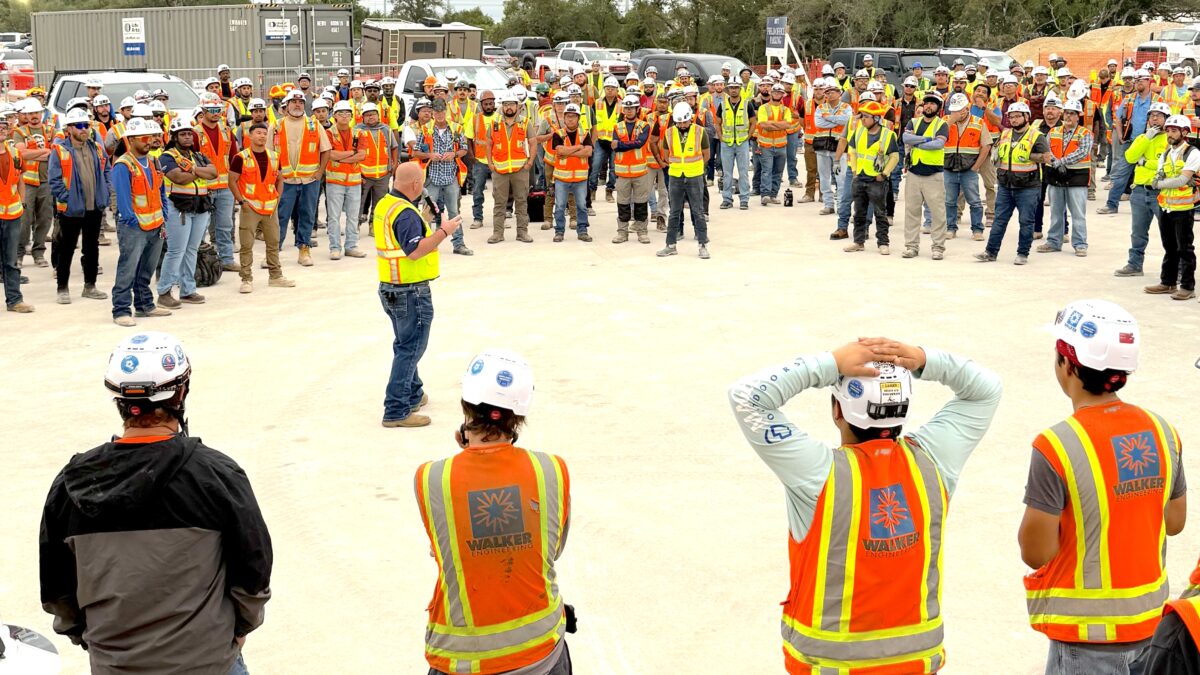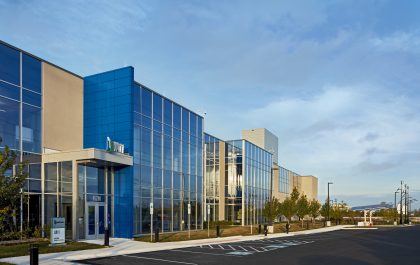Collaboration and Well-Being Take Center Stage During Safety Week 2025
This week, May 5-9, marks Construction Safety Week 2025 across the United States—a time when the construction industry comes together to highlight the critical importance of safety on every job site. Among the many organizations participating this year is Vantage Data Centers, which is using the week as an opportunity to reinforce its commitment to safety, not just on active construction sites, but across the daily operations of its global portfolio of data centers, too.
This year, Vantage is recognizing Construction & Operations Safety Week with a series of events and activities with the theme “Partnering for an Elite Safety Culture,” a reflection of the company’s belief that safety is not simply a checklist, but a culture shaped by collaboration and shared responsibility.
What does it mean to build an elite safety culture? And how can organizations turn that vision into reality?
To find out, we sat down with Trey Dean, global vice president of environmental health and safety. During our discussion, Dean highlighted the importance of collaboration and total well-being in shaping a strong safety culture, and shared what it takes for industry leaders to raise the bar in building an elite safety culture that goes beyond compliance.
Data Centers Today (DCT): Can you tell us what Construction & Operations Safety Week is all about? What is its mission, and who is it intended to reach?

Trey Dean: Construction & Operations Safety Week is a dedicated time each year to reflect on the critical importance of safety within our industry. Its mission is to inspire everyone—from frontline workers to executives—to reaffirm our shared commitment to safe work practices, learn from one another and strengthen the systems that protect people.
Safety Week is intended to reach not only employees, but also contractors, vendors and partners—truly anyone who sets foot on a project site or in an operational facility. Safety is a shared responsibility, and Safety Week serves as a reminder that we all have a role to play.
DCT: This year’s theme at Vantage is “Partnering for an Elite Safety Culture.” Why this theme? What are your goals for this year’s safety week?
Trey Dean: We chose “Partnering for an Elite Safety Culture” because true safety excellence cannot be achieved in isolation—it demands deep, mutual collaboration across all teams, trades and leadership levels. Our goal this year is to reinforce the idea that every interaction, every partnership and every decision plays a critical role in protecting people.
We want Safety Week to spark meaningful conversations, strengthen trust among teams and encourage every person at Vantage—whether working in construction or operations—to take ownership of safety beyond minimum standards.
Building an elite safety culture means raising the standard far beyond mere compliance—it’s about relentlessly pursuing zero harm and supporting one another to ensure every person succeeds in reaching it.
DCT: How is Vantage participating in Construction & Operations Safety Week this year? Are there specific initiatives, trainings or events that employees and partners should know about?
Trey Dean: This year, Vantage is launching a range of activities across our global sites to bring Safety Week to life. We’re hosting jobsite stand-downs, specialized toolbox talks and leadership site visits to demonstrate visible, hands-on safety leadership.
In operations, teams are sharpening their risk awareness through focused safety drills and facility inspections. We’re also introducing targeted safety challenges and recognition programs—encouraging teams to identify improvements and celebrate proactive safety actions. Recognizing that true safety includes mental and emotional well-being, we’re making mental health resources and wellness sessions available throughout the week.
It’s a week that’s fueling momentum for lasting safety excellence, and we’re proud to see so many different groups actively coming together in support of a stronger, safer culture.
DCT: Oftentimes, it appears companies are managing compliance vs. managing safety. What steps is Vantage taking to proactively reduce or eliminate safety risks for construction and operations? Are there any recent innovations, partnerships or training programs worth highlighting?
Trey Dean: At Vantage, we are intentional about moving beyond basic compliance to true, proactive risk management.
On the construction side, we focus heavily on pre-task planning, high-risk activity reviews and contractor engagement—all before work begins. We’ve also introduced enhanced audits that prioritize leading indicators, such as participation rates, quality of observations and near-miss reporting, rather than focusing solely on trailing outcomes.
On the operations side, we’ve implemented a structured risk assessment framework that integrates environmental, health and safety (EHS) considerations into facility maintenance, vendor management and project planning processes.
In addition, we’ve forged partnerships with leading industry groups to stay at the forefront of best practices in critical areas like electrical safety, confined space entry and emergency response.
Leaders must model and champion safety visibly, not manage it from a distance. Employees need to feel empowered to act immediately when they see risks, knowing they have the full support of their organization.
DCT: Mental health is often overlooked in discussions around workplace safety. How does Vantage approach mental well-being as part of its overall safety strategy? What resources or support systems are available to team members?
Trey Dean: At Vantage, mental health is a core part of how we define a truly ‘safe’ environment. We view psychological safety and emotional well-being as non-negotiable, not an add-on.
Throughout the year—and especially during Safety Week—we actively promote access to employee assistance programs (EAPs), wellness coaching and mental health awareness campaigns. We also work to normalize conversations around mental health through leadership messaging and peer support networks.
Our operational safety programs integrate stress management and fatigue risk discussions, while on the construction side, we’re partnering with vendors and contractors to bring onsite wellness resources, including resilience training and access to counseling services, directly to our teams. Fostering a culture of care strengthens our team’s ability to perform safely and sustainably.
DCT: Looking ahead, what is your vision for the future of safety in our industry? What more can companies, leaders and employees do (individually or collectively) to create a culture where safety, both physical and mental, is always prioritized? How do we raise the bar?
Trey Dean: The future of safety in our industry must be proactive, personal and embedded into every level of decision-making. The next frontier isn’t just about eliminating hazards, it’s about eliminating the conditions that allow unsafe behaviors or environments to persist, whether they are physical, mental or organizational.
Leaders must model and champion safety visibly, not manage it from a distance. Employees need to feel empowered to act immediately when they see risks, knowing they have the full support of their organization.
Additionally, companies must recognize that building a sustainable safety culture demands real investment in training, leadership development, mental health resources and inclusive environments where people feel valued and heard.
We raise the bar when safety stops being a checkbox and becomes a defining measure of excellence—ingrained in every decision, every interaction and every aspect of how we do business.
To learn more about what drives Vantage’s approach to an elite safety culture, click HERE.



